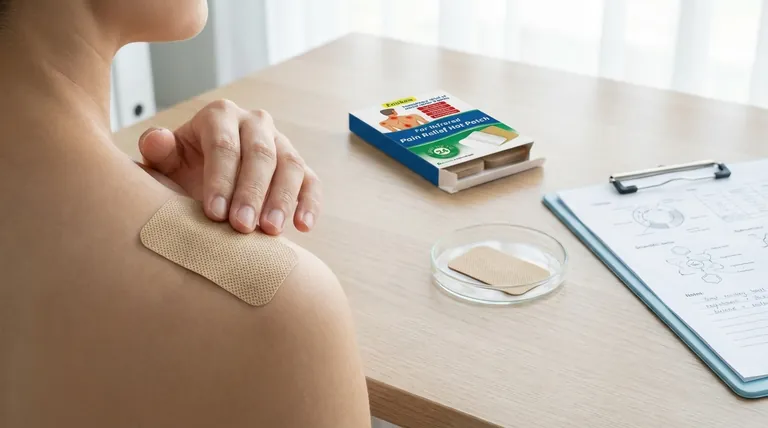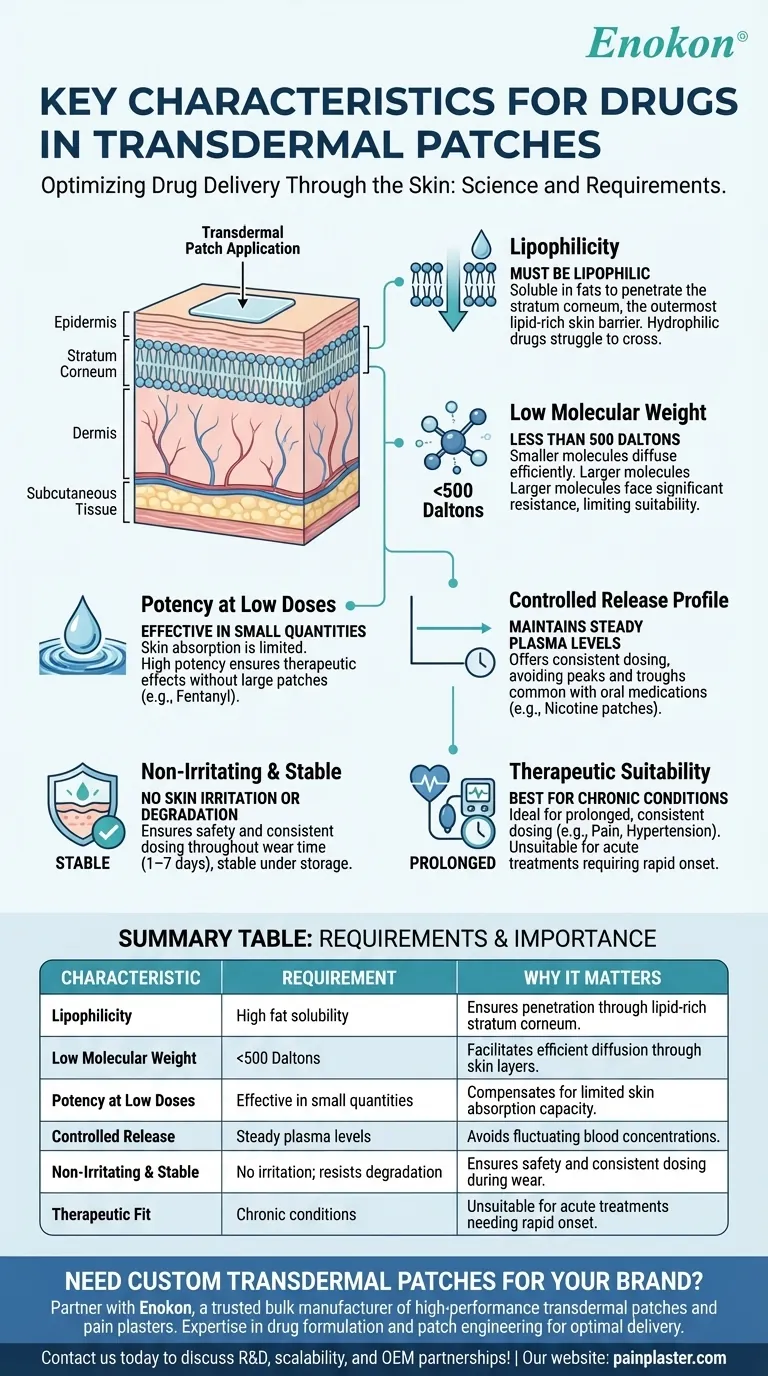Transdermal patches are a sophisticated drug delivery system that requires specific drug characteristics to ensure effective absorption through the skin. The drug must be lipophilic to navigate the lipid-rich outer skin layer (stratum corneum) and have a low molecular weight to facilitate diffusion. Additionally, the drug should be potent enough to achieve therapeutic effects at low doses, as the skin's barrier limits absorption rates. Common examples like fentanyl, nicotine, and clonidine demonstrate these traits, offering controlled release and improved patient compliance. This method is particularly beneficial for chronic conditions requiring steady medication levels, avoiding the peaks and troughs of oral dosing.

Key Points Explained:
-
Lipophilicity
- The drug must be lipophilic (soluble in fats) to penetrate the stratum corneum, the skin’s outermost lipid-rich layer.
- Hydrophilic drugs struggle to cross this barrier, making lipophilicity a critical factor for transdermal delivery.
-
Low Molecular Weight
- Drugs with a molecular weight <500 Daltons diffuse more efficiently through the skin’s layers.
- Larger molecules face significant resistance, limiting their suitability for transdermal patch delivery.
-
Potency at Low Doses
- The skin’s absorption capacity is limited, so the drug must be effective in small quantities (e.g., fentanyl’s high potency).
- This avoids the need for large patches or frequent application.
-
Controlled Release Profile
- Ideal drugs maintain steady plasma levels over time (e.g., nicotine patches for smoking cessation).
- This contrasts with oral medications, which can cause fluctuating blood concentrations.
-
Non-Irritating and Stable
- The drug and patch components must not cause skin irritation or degrade under storage conditions.
- Stability ensures consistent dosing throughout the patch’s wear time (often 1–7 days).
-
Therapeutic Suitability
- Best for chronic conditions (e.g., hypertension, pain) requiring prolonged, consistent dosing.
- Unsuitable for acute treatments where rapid onset is needed (e.g., anaphylaxis).
Why These Traits Matter:
Transdermal patches merge pharmacology with material science, leveraging skin physiology to bypass gastrointestinal degradation and first-pass metabolism. Their success hinges on selecting drugs that align with the skin’s natural barriers—offering patients a discreet, pain-free alternative to injections or pills. For purchasers, understanding these criteria ensures informed decisions when evaluating patch-based products for clinical use.
Summary Table:
| Characteristic | Requirement | Why It Matters |
|---|---|---|
| Lipophilicity | High solubility in fats | Ensures penetration through the skin’s lipid-rich outer layer (stratum corneum). |
| Low Molecular Weight | <500 Daltons | Facilitates efficient diffusion through skin layers. |
| Potency at Low Doses | Effective in small quantities (e.g., fentanyl) | Compensates for limited skin absorption capacity. |
| Controlled Release | Steady plasma levels over time (e.g., nicotine patches) | Avoids peaks/troughs seen with oral dosing. |
| Non-Irritating & Stable | No skin irritation; resists degradation | Ensures safety and consistent dosing during wear. |
| Therapeutic Fit | Best for chronic conditions (e.g., pain, hypertension) | Unsuitable for acute treatments needing rapid onset. |
Need custom transdermal patches for your pharmaceutical brand or distribution network? Partner with Enokon, a trusted bulk manufacturer of high-performance transdermal patches and pain plasters. Our expertise in drug formulation and patch engineering ensures optimal delivery for your active ingredients. Contact us today to discuss R&D solutions, scalability, and OEM partnerships tailored to your needs!
Visual Guide

Related Products
- Far Infrared Heat Pain Relief Patches Transdermal Patches
- Capsaicin Chili Medicated Pain Relief Patches
- Heating Pain Relief Patches for Menstrual Cramps
- Herbal Eye Protection Patch Eye Patch
- Menthol Gel Pain Relief Patch
People Also Ask
- How does the Deep Heat Back Patch work? A Drug-Free Solution for Targeted Pain Relief
- How does capsaicin work in the medicated heat patch? The Science Behind Pain Relief
- Are heat patches safe for all body parts? Key Safety Zones and No-Go Areas Explained
- What did the UK Million Women Study find regarding transdermal versus oral hormone therapy? A Safer Choice for Gallbladder Health
- How quickly does the Deep Heat Pain Relief Back Patch activate and how long does it provide warmth? Get 16-Hour Relief















